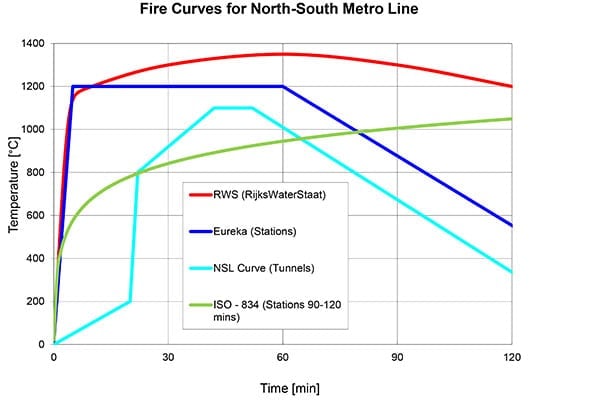Amsterdam, the capital of The Netherlands, was challenged with an ever increasing pressure on road and rail infrastructure. As a result, the existing metro infrastructure had to be expanded with an additional line, which connects to the existing metro lines, at the Central Station. The new to be constructed line would run from the Northpark to the South Station, hence the name of the new metro line, The North-South Line.
The old city of Amsterdam was built in the delta area of the river Amstel. The sediment of more than 1000 years old is a thick soft layer which caused many geological and structural challenges for designers of buildings and infrastructure in this region. The designers and contractors were confronted with another set of challenges to build a new metro line in the densely built and populated city centre of Amsterdam, which is visited by over 9 million tourists per annum.
Time temperature curves
The tunnel, the stations and specific parts of the stations are designed according to different time-temperature curves. Within the tunnel there is no fully developed fire to be expected due to the fact that the metro will not come to a standstill in the tunnel itself, based on the safe haven principle described above. Based on Computational Fluid Dynamics modelling it has been determined that, for this specific project, the NSL curve applies for the tunnel sections.

A realistic worst case scenario of a fully developed metro fire has been applied to model the expected thermal attack on the concrete structure in the stations. The demarcated areas which are directly impinged by flames are designed according to a 120 minute EUREKA time-temperature curve. The areas which are not directly exposed to flame contact are designed to withstand ISO-834 time-temperature curves for 90 or 120 minutes, depending on the fire load found in the CFD modelling.